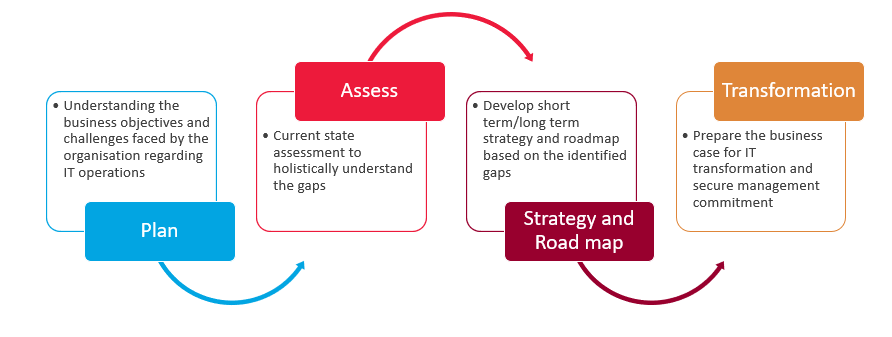
Dr. Madan Mohan
In this era, managing complex set of business technologies and delivering efficient IT services are key factors in organizational success. It is about gaining the competitive advantage through transforming their IT operations which is aligned with the business strategy, goals, and objectives.
IT transformation is an end to end review and revamp of the organisation’s IT strategy, assets, and resources. The result of this assessment can be leveraged in improving the productivity, efficiency, and on-time delivery of the IT operations in this digital world.
Surviving in this highly competitive market while innovating the business with new techniques is no longer the only step for survival. According to a research on Forbes, 70% of companies either have a digital transformation strategy in place or are working on one and 21% of companies think they’ve already completed digital transformation. They key to success here is to align the IT strategy with overall organisation’s business strategy and this can only be achieved by IT transformation.
IT transformation is also one of the main components of the digital transformation. This includes the changes or upgradation in network architecture, IT service management (such as Change management, Incident Management, etc.), hardware, applications, software along with how the data is stored in the IT assets. In other words, IT transformation can also be termed as going to the next world with higher capabilities.
We have listed below few challenges faced by the organisations during IT transformation:
Our IT transformation approach is comprised of four steps:

We provide the following services as part of IT transformation: